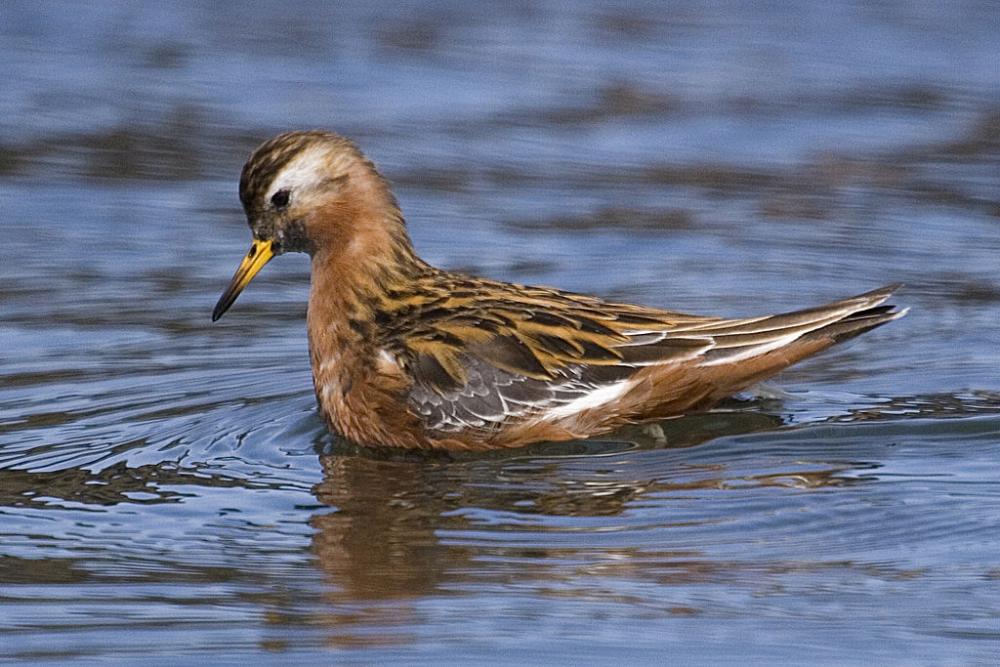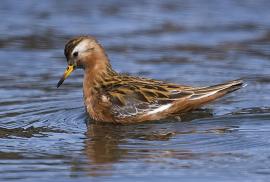Guide to Boreal Birds
Overview
Hundreds of these shorebirds may be seen from fishing boats far at sea; bobbing like corks, they look like miniature gulls riding the waves. While they are at sea the greater part of their diet is made up of tiny marine animals known as plankton. On land they forage around tundra pools for the aquatic larvae of mosquitoes, midges, and beetles. After egg-laying the male takes over the duties of incubating the eggs and rearing the young.
Description
8" (20 cm). A starling-sized swimming shorebird with a conspicuous wing stripe and a short yellow bill with black tip. Breeding adults rich chestnut, with dark crown, white face. Females more boldly patterned than males. In winter, gray above and white below, with pale crown, dark line through eye, and dark bill.
Voice
Sharp metallic kreeep.
Nesting
4 olive eggs, speckled with brown, placed in a grass-lined depression on an elevated spot in low marshy tundra.
Habitat
Breeds on tundra; found on open ocean, bays, inlets, lakes, shores, and coasts during migration.
Range/Migration
Breeds in Alaska and northern Canada. Migrates off both coasts, very rarely in interior. Winters mainly at sea in Southern Hemisphere; irregular along Pacific Coast. Also in Old World.



